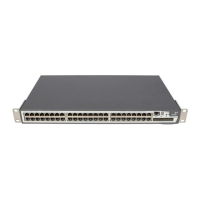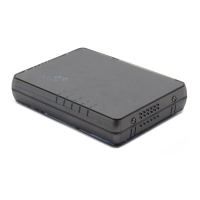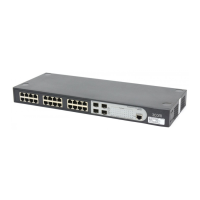76 CHAPTER 2: USING PORT COMMANDS
alname:
Aggregation group name, character string with 1 to 32 characters.
Description
Use the link-aggregation group
agg_id
description command to configure
descriptor for an aggregation group. Use the
undo link-aggregation group
agg-id description
command to delete aggregation group descriptor.
Related command: display link-aggregation verbose.
Example
To configure myal1 as the descriptor of aggregation group 22, enter the following:
<SW5500>system-view
System View: return to User View with Ctrl+Z.
[SW5500]link-aggregation group 22 description myal1
[SW5500]
link-aggregation group
agg-id mode
Syntax
link-aggregation group
agg_id
mode { manual | static }
undo link-aggregation group
agg_id
View
System View
Parameter
agg_id:
Aggregation group ID, in the range of 1 to 464.
manual: Manual aggregation group.
static: Static aggregation group.
Description
Use the link-aggregation group
agg_id
mode command to create a manual or
static aggregation group. Use the
undo link-aggregation group command to
delete an aggregation group.
A manual or static aggregation group can have up to eight ports. You can use the
l
ink-aggregation group
agg-id
mode command to change an existing dynamic
aggregation group into a manual or static one. If the port number in a group
exceeds eight, this operation fails and the system prompts you about the
configuration failure.
Related command: display link-aggregation summary.
Example
To create manual aggregation group 22, enter the following:
<SW5500>system-view
System View: return to User View with Ctrl+Z.
[SW5500]link-aggregation group 22 mode manual

